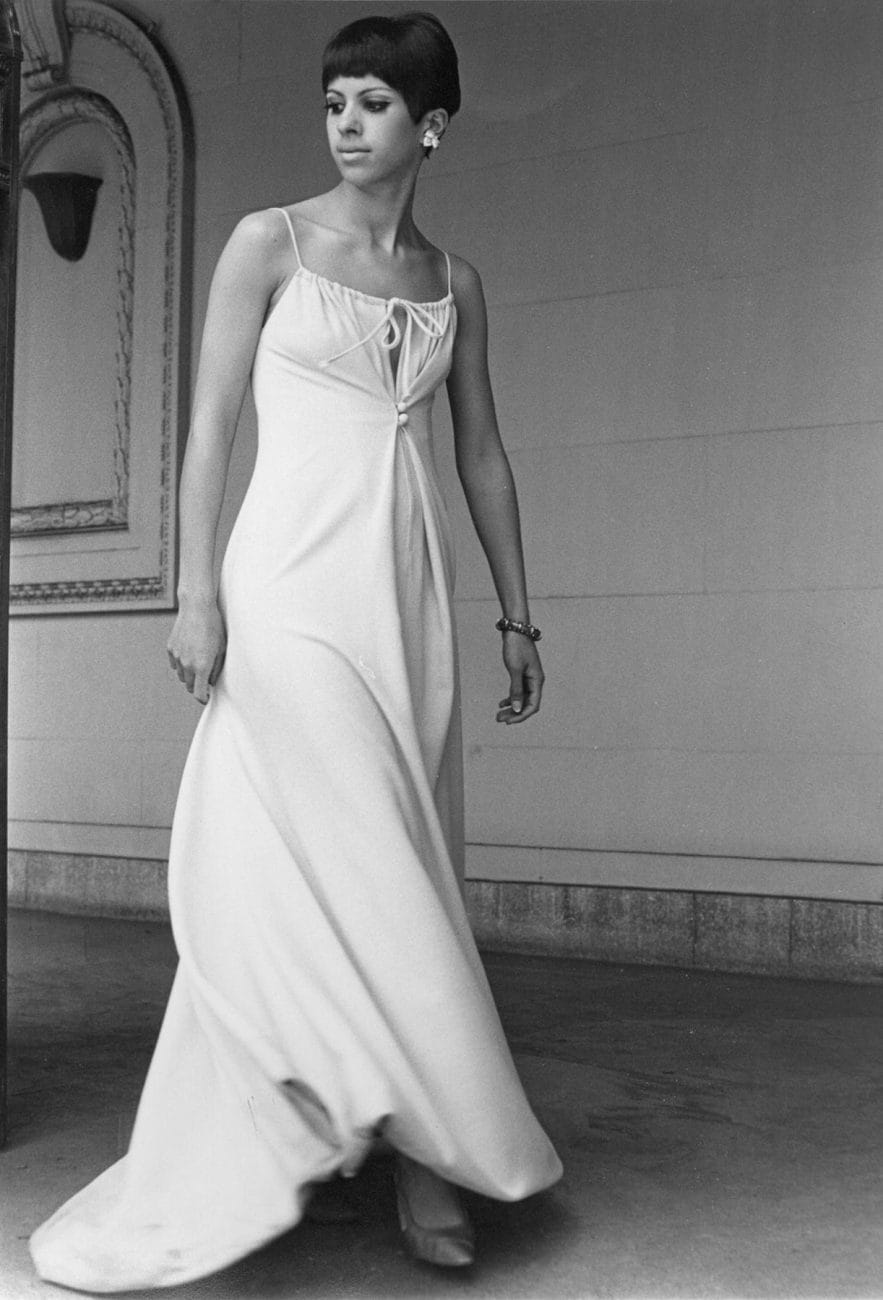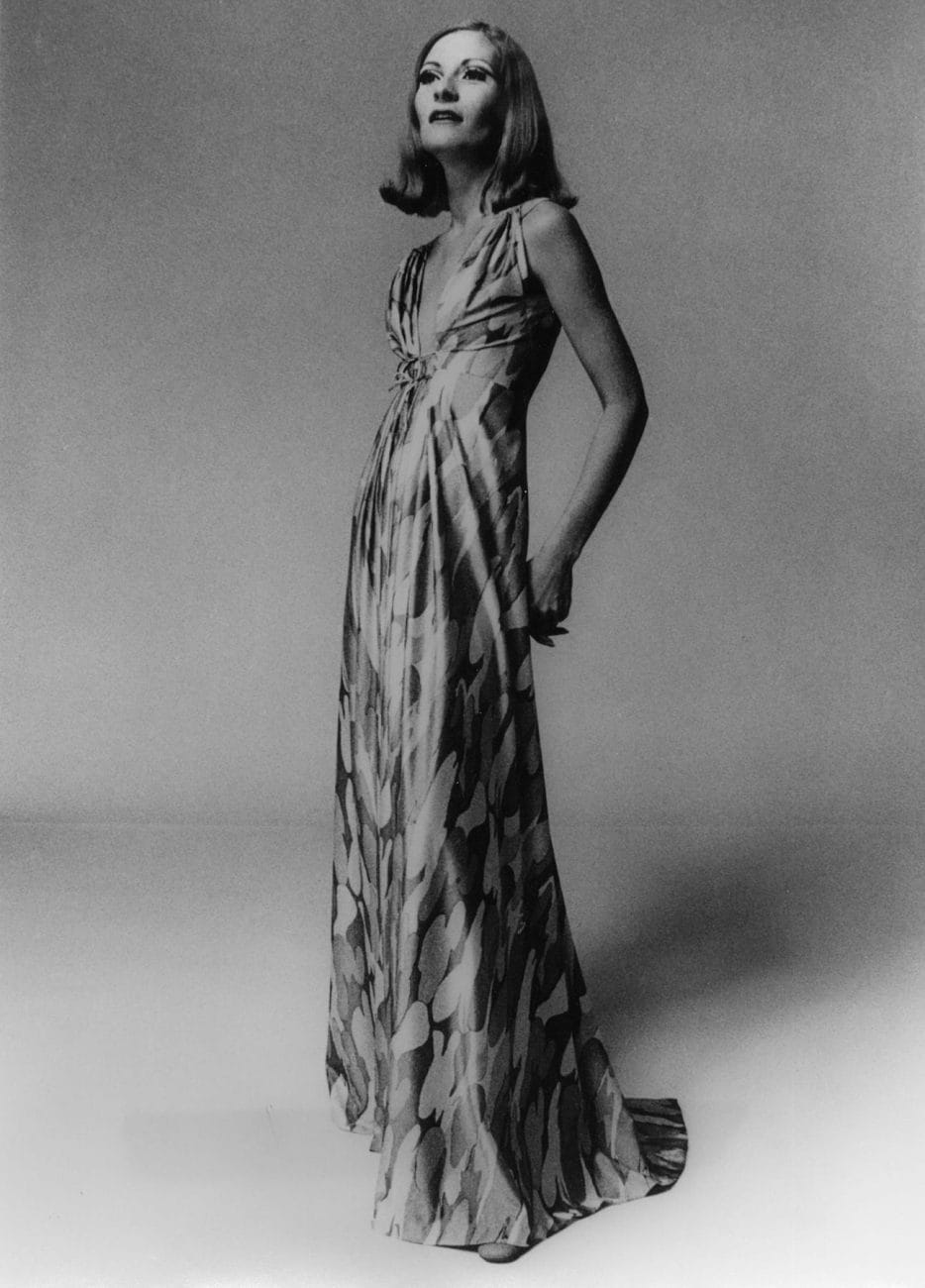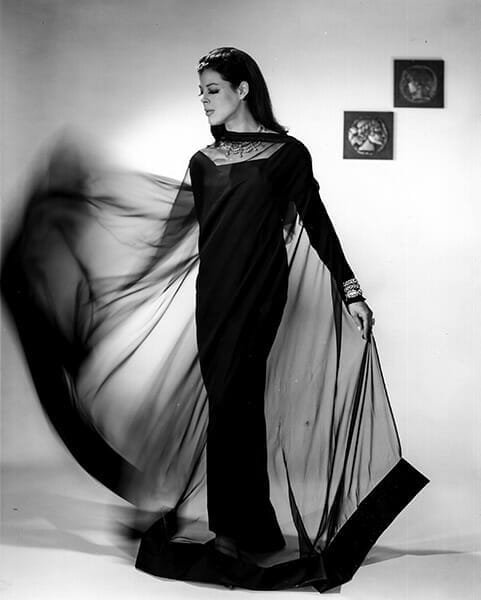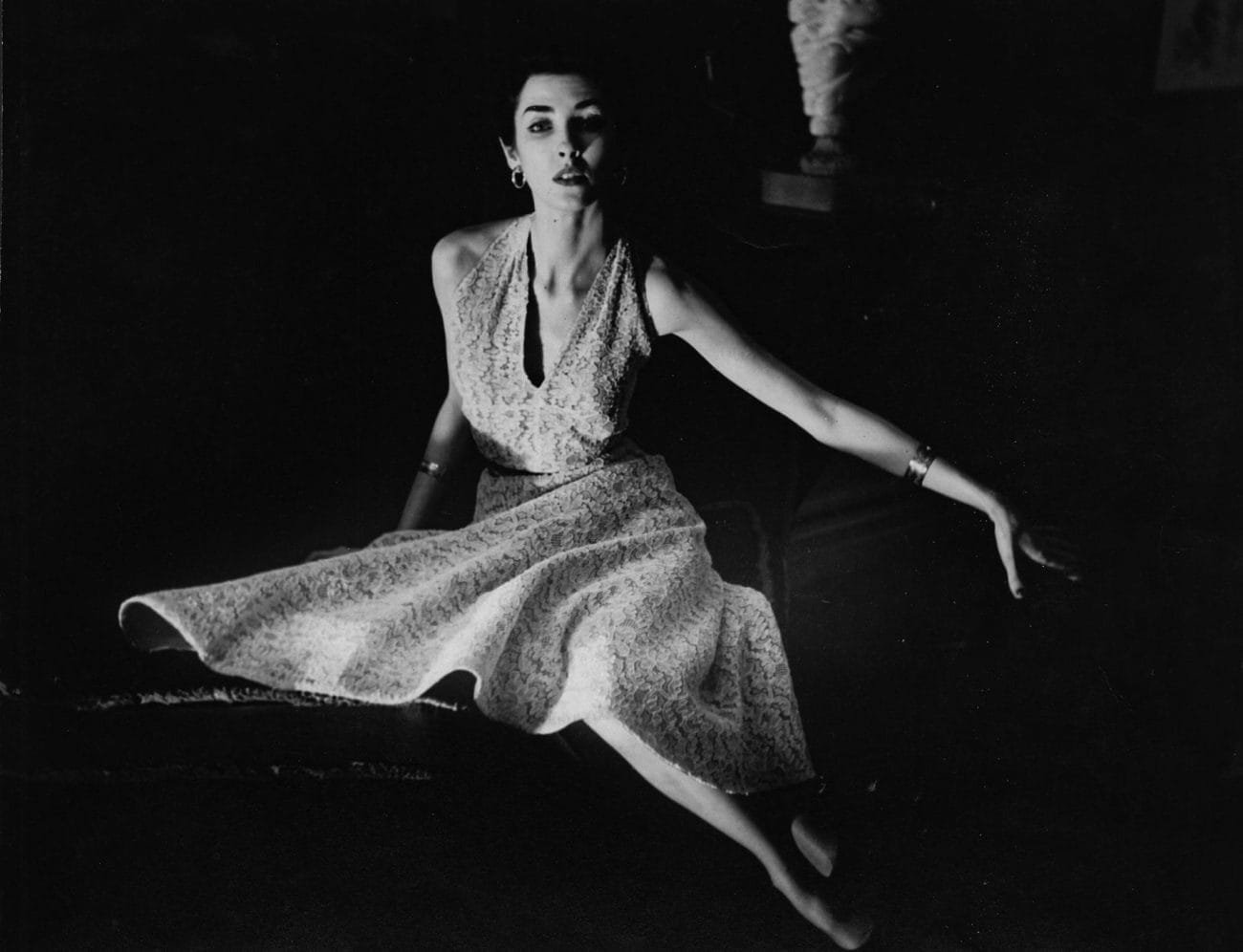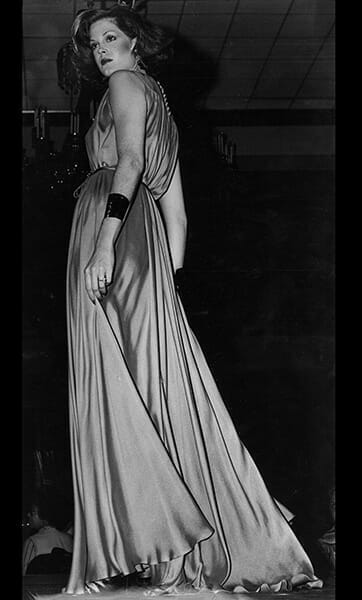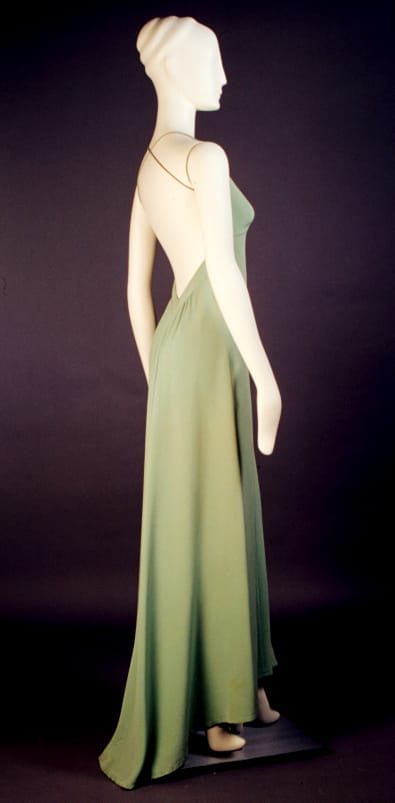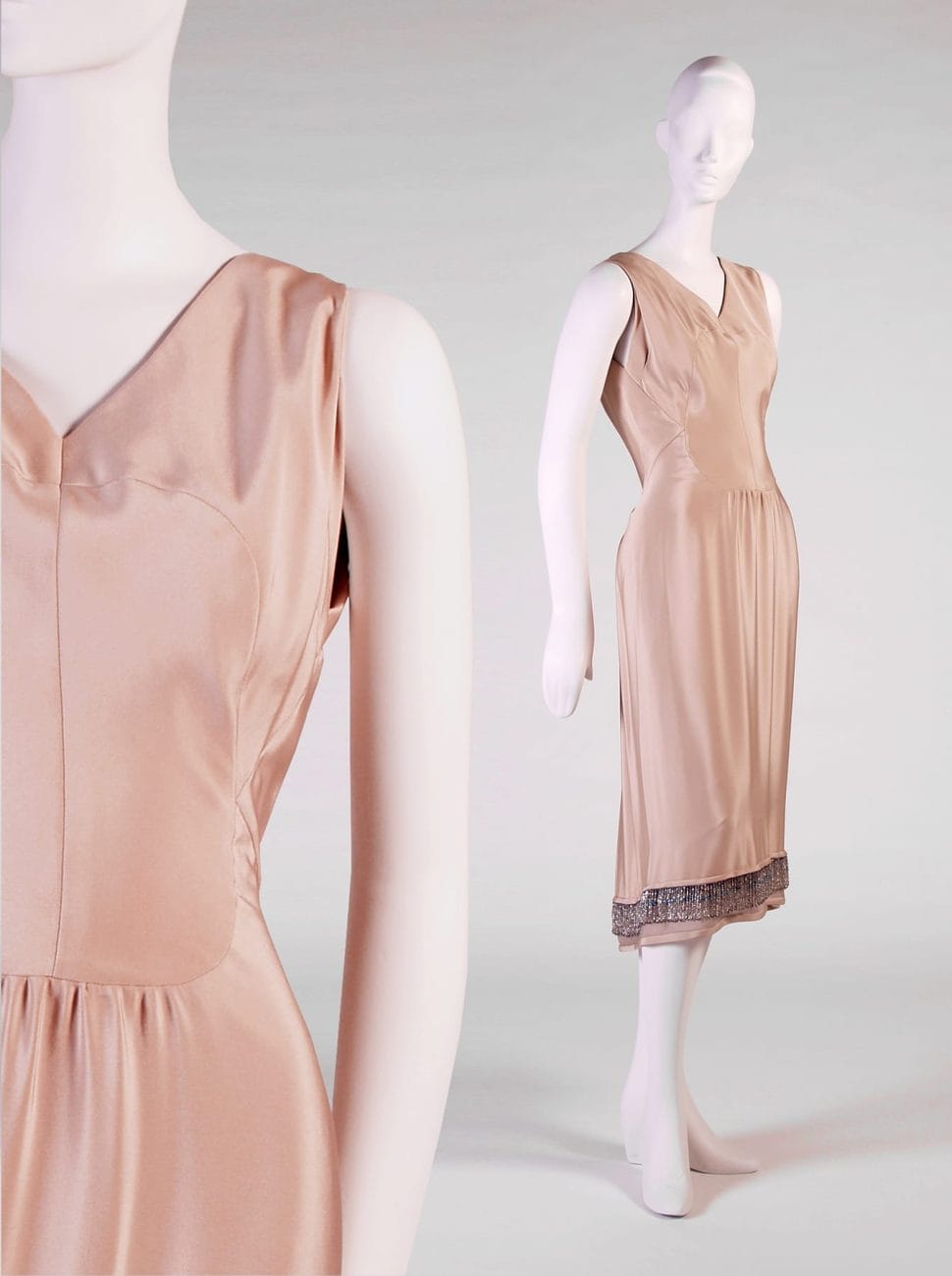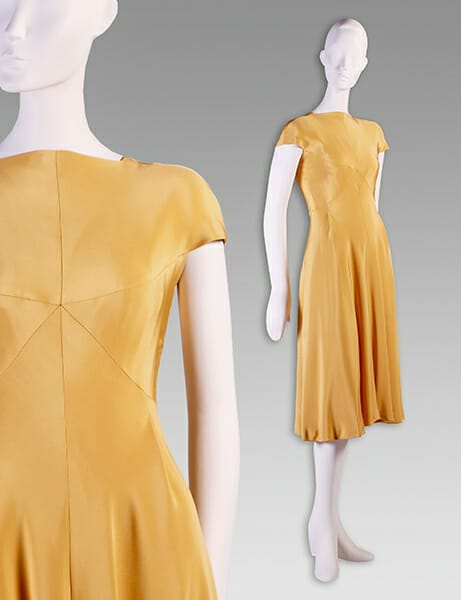Model Crystal Klets wears a Charles Kleibacker gown in a wool/Dacron blend in this 1972 photograph.
Charles Kleibacker Gallery
Charles Kleibacker was a fashion designer from Cullman who became a well-known figure in the highly competitive world of New York fashion. His specialty was the use of the bias cut in day and evening dresses that were engineered to delineate a woman’s anatomy while providing ease and elegance to the wearer. In addition to using couture sewing techniques, Kleibacker developed innovative ways to drape cloth and assemble garments for his business (1960-1986). He shared this knowledge with students and the public throughout the United States and had simultaneous careers as an educator, a collector and a curator. His design work can be found in numerous museums and costume collections around the country.
